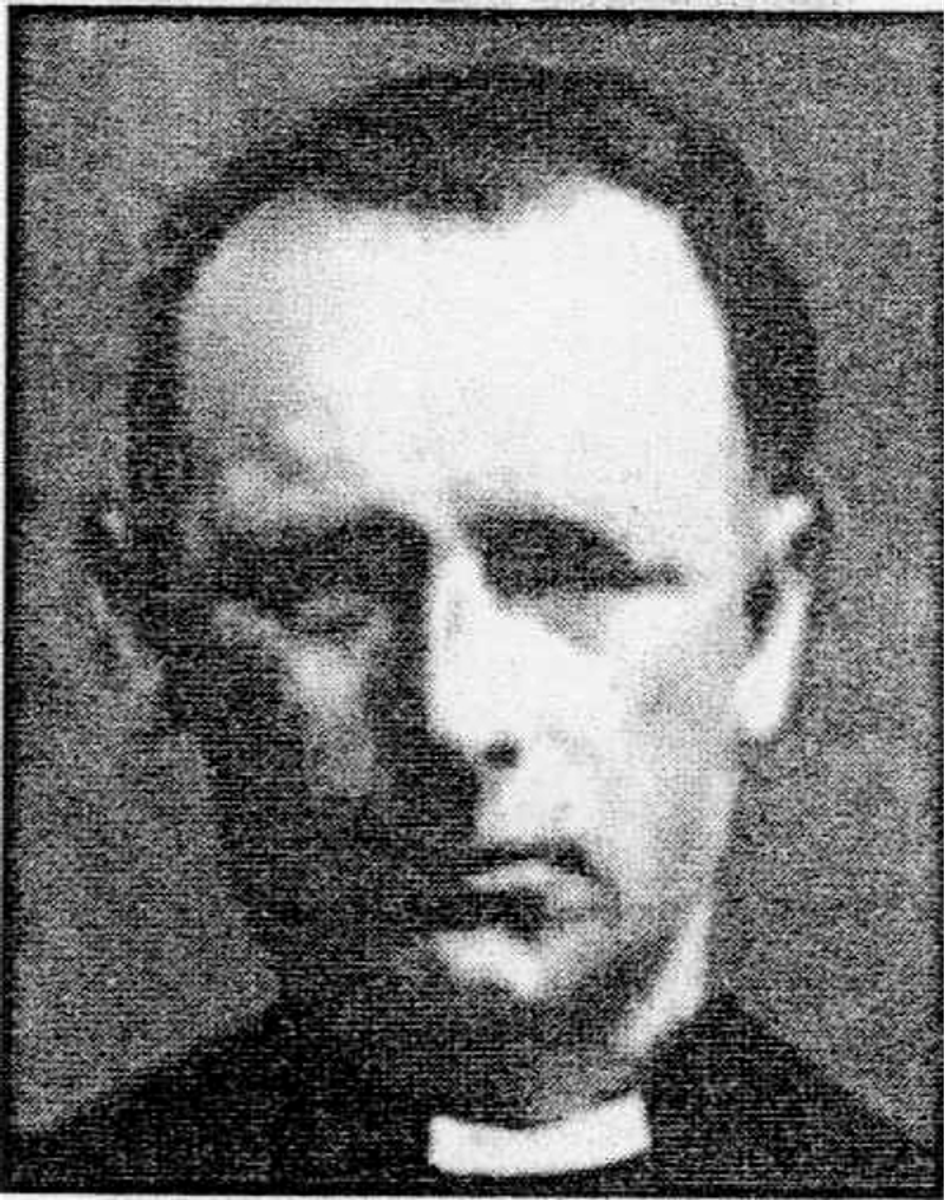In the very Beginning
ALPHONSUS PRUNSTER (1971-1934), the ‘founding’ Christian Brother in Tasmania. The photo recently ‘came to light’.

In the very Beginning
ALPHONSUS PRUNSTER (1971-1934), the ‘founding’ Christian Brother in Tasmania. The photo recently ‘came to light’.


St Virgil’s College opened on the old cemetery hill in Barrack St in February 1911 for boarding and day pupils. The number of enrolments grew rapidly, and by year's end, there were 168 pupils on the books, of whom 55 were boarders. Over the course of that year, the number of Brothers in the community grew from four to six.
However, there had been one and sometimes two Christian Brothers in Tasmania since at least July 1909. These Brothers were William Alphonsus Prünster and William Mark McCarthy. The Barrack St Community Annals record that in that month, "...Brother Alphonsus, the lay brother, and Br McCarthy, Consultor, decided on the plans for the building and the levelling and excavation. Under the able and energetic direction of Br Alphonsus, the work proceeded rapidly... For two years, he worked indefatigably."
Br Alphonsus (1871-1934) was a native of Guilford, Western Australia, and joined the Brothers in 1897 after being a general handyman at the Orphanage at Subiaco. The Provincial Ambrose Treacy sent Alphonsus to the newly-opened Perth Technical School near the Brothers in Gregory Terrace where he studied "Cookery and Domestic economy," in which he "became very proficient."
Alphonsus cooked at Lewisham novitiate and briefly at St Vincent's Orphanage South Melbourne and then worked in the gardens at Goulburn in 1906. 1907 saw Alphonsus as caretaker at the newly-purchased Strathfield property. The architect, Mr Hennessy asked that Alphonsus be the clerk of works and tutored him in the finer points such that according to his biographer, he "became thoroughly conversant with everything connected with a new building." Furthermore, "he was very exacting in all respects, and no contractor had a chance of evading any of the requirements of the specifications."
Alphonsus was then sent to supervise the start of the building of the new Chapel at Nudgee College, outside Brisbane. There, Alphonsus raised questions about the strength of the foundations. Subsequent cracking proved that he was accurate.
Meanwhile, in 1908 negotiations had been taking place between the new Australasian Provincial, Patrick Jerome Barron, and the new Archbishop of Tasmania, Patrick Delaney, who was urging that the Christian Brothers come to Hobart. He had even gone over the head of Barron to visit the Superior General Br Maxwell in Dublin. While the previous Archbishop, Daniel Murphy, was still in the seat, Ambrose Treacy had refused to send Brothers to Hobart. In 1908, as Hobart was calling, Sydney was insistent, and Barron was also trying to open in Townsville, which prompted a letter from the Cathedral Administrator in Sydney, Dean O'Haran, saying: "After all, what is Townsville but a stewing pan, and what is Hobart but a cemetery! At most they are Townsville and Hobart..."Barron gave the task of setting up the Hobart Foundation to his action man, William Mark McCarthy. The new College was to be built on the foundations of a half-completed St Virgil's school building which had been started by Archbishop Murphy in 1904. In July 1909, McCarthy brought with him 38-year-old Alphonsus Prünster, also a man with a good track record and practical skills. McCarthy came and went over the next two years while Alphonsus stayed as the first permanent Christian Brother in Tasmania.
Alphonsus virtually singlehandedly supervised the refurbishment of the previous wing and the building of the new wing. He set up the plant, and the classrooms, and even built the desks. His biographer, P.J. Barron, comments that "needless to say, he again showed himself quite conversant with all the building requirements and was successful in securing the terms of the contract."
During 1909-10, Alphonsus lived alone in Fr Therry's old house opposite the Cathedral. It would seem that, unlike the later teaching Brothers, Brother Alphonsus was called by his first name. Alphonsus suffered from a "weak stomach," and for long periods, he had to live on liquid food. His approving biography notes that "even while living by himself, ... he was most exact in saying the prescribed prayers, making his meditation, and when possible hearing Mass."
It would seem that Brother Alphonsus quickly earned the friendship of many of the local youngsters who would gather about him as he went about his activities. In 1993, Brother Russell Peters interviewed an elderly lady who had been one of these youngsters. Her impression of Prünster, seen through her child's eyes, was that the youngsters loved Brother Alphonsus. He was a friendly character who engaged with the local people. The small-scale informal public relations exercise may have contributed to the larger-than-expected numbers at the opening of St Virgil's in February 1911.
The Community Annals of Barrack St record that after being transferred to Goulburn, Alphonsus Prünster returned to Hobart in 1916 for three years. During this second period, he again toiled singlehandedly, apparently with a horse and cart, turning the Cemetery Hill into a sports oval. The children watching noted that Alphonsus tried to respect the cemetery as he worked.
The old scholar's memory is that "Lay Brother Alphonsus ... toiled with great effect at the College and was held in the highest regard by all."
Alphonsus went on to supervise constructions at Castle Hill NSW, Rostrevor in Adelaide, and Oamaru in New Zealand. He was living back in Western Australia at Clontarf when he had a series of strokes and died in 1934 aged 63.
The Brothers in Oceania owe their origins in Tasmania to a non-teacher, a "lay" Brother as we used to say, who 102 years ago brought the charism of Edmund Rice to the children of Tasmania with the work of his hands and the integrity of his life.
Information gleaned from Necrology of Brother William Alphonsus Prünster, written by Patrick James Barron, published in 1935, included in the 1961 Golden Jubilee History of St Virgil's College.